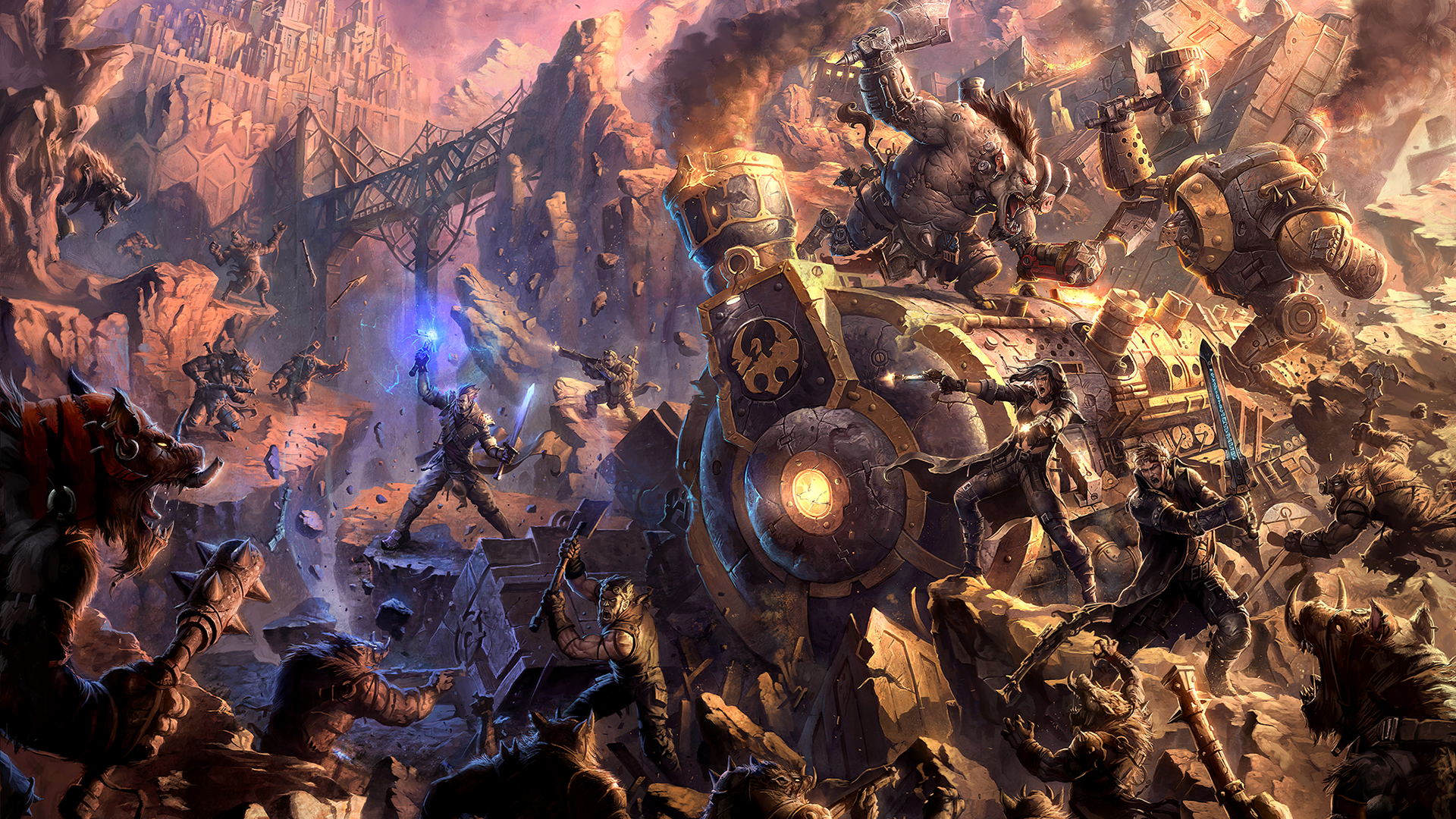In the centuries leading up to the time known as the Thousand Cities Era, Humans and the other peoples of western Immoren often struggled against nature and the many threats that assailed their lands. Among these were the Wurm-worshipping tribes of the Molgur, which included powerful Trollkin kriels, bogrin, Ogrun, and Human barbarians. But they were not alone. In the depths of what is now known as the Thornwood, one of the most notorious kingdoms of ancient times was born.

History of Caen
-
2 AR
2 AR
The Thousand Cities Era
Era beginning/endThe scattering of the Molgur tribes after their defeat at Calacia (Caspia) paved the way for Human civilization to flourish across the face of western Immoren. While the Khardic Empire (Khador) expanded as Priest-King Khardovic’s influence spread across northern lands and the malignant kingdom of Morrdh descended into ruin, other nations rose throughout the continent, from Tordor and Thuria to Rynyr and Midar— realms whose shadows can still be felt in modern-day Cygnar, Ord, and Llael, as well as the lands beyond them.
Location
Ancient Icthier -
3 AR
3 AR
The Orgoth Occupation
Era beginning/endThe blackships of the Orgoth invaders were first spotted by the Khadoran Empire in the north. The Orgoth’s abominable fleets were propelled by winds summoned by dark magic, crewed by scores of indefatigable warriors, and commanded by warwitches with the power to boil the seas and call down death from the sky. Unflinching in the face of such a terrifying enemy, the mighty Tordoran navy—the envy of western Immoren—sailed out to meet them.
Not a single ship returned. -
4 AR
300 AR
Rebellion and the Corvis Treaties
Era beginning/endThe logistics of the eventual overthrow of the Orgoth conquerors are infinitely complex, but two major factors gave the Immorese the tools they needed to ultimately drive the invaders from their shores. One was the Gift of Magic, brought to humankind by Thamar’s bargain with the infernals. The other was alchemy (see Alchemist), the first science of magic. Through the combination of magic and alchemy, the people of western Immoren were able to construct the weapons that made the Rebellion possible. The first Human sorcerers had appeared in 137 BR and within a century alchemy would provide new weapons to fight the Orgoth.
-
400 AR
603 AR
The Iron Kingdoms Era
Era beginning/endSaying that the years following the defeat of the Orgoth were relatively peaceful simply emphasizes how war-torn the history of western Immoren truly is. The signing of the Corvis Treaties established borders that would hold for centuries and ushered in an era of reconstruction, but numerous conflicts were on the horizon.
-
610 AR
612 AR
The Claiming
ExtinctionLong ago, Zevanna Agha, the Old Witch of Khador—a powerful and mysterious entity who had made the northern lands her home since the time of prehistory—had foreseen the coming threat of the infernals and the cost of the Twins’ bargain with them. In response, she concocted a scheme to unleash the grymkin, creatures created by the Defiers in their nightmare prison in Urcaen, in a time that came to be known as the Wicked Harvest. Her reasoning was simple: by cutting down those whose own wickedness reflected the twisted souls of the grymkin themselves, the Defiers’ scythe would be certain to cull many of the carefully placed infernal agents— whether rich or poor, noble or commoner—who had been deployed in secret throughout the world in order to set their masters’ plans into action.
-
617 AR
617 AR
Present Day
Era beginning/endFive years have passed since the grim events of the Claiming robbed western Immoren of so much. The work of rebuilding continues, and many towns and cities are ruined or untenanted, as both the natural world and unnatural beasts slowly reclaim what was once humanity’s domain.
Although the Nonokrion Order was defeated, the threat it posed did not end. The infernals have agents throughout all the nations of western Immoren, and the work of tracking down and rooting out those who have not already been revealed, as well as those who escaped, remains. Nor were the infernals themselves wholly destroyed. The Nonokrion Order suffered the loss of some of its greatest leaders, but none can say how many more of these terrifying beings wait outside the edges of reality, clawing and scratching to get in.
